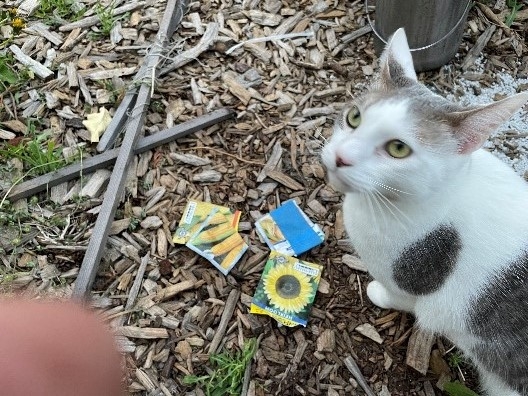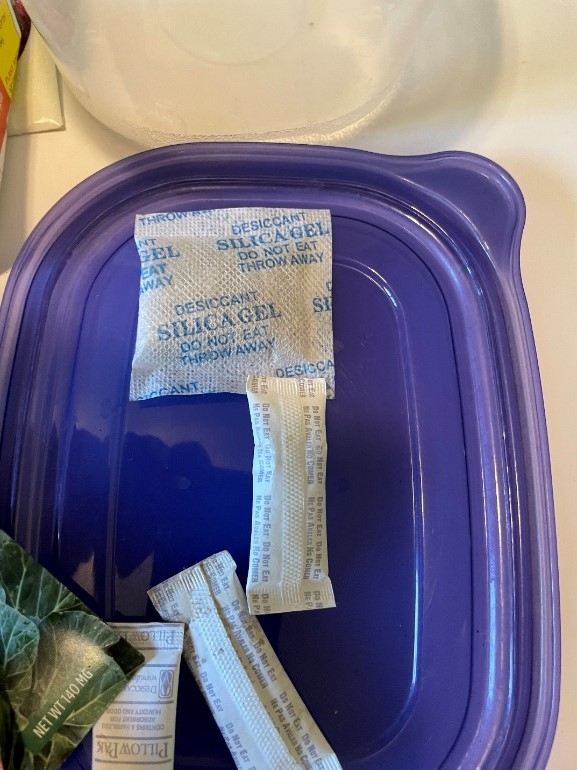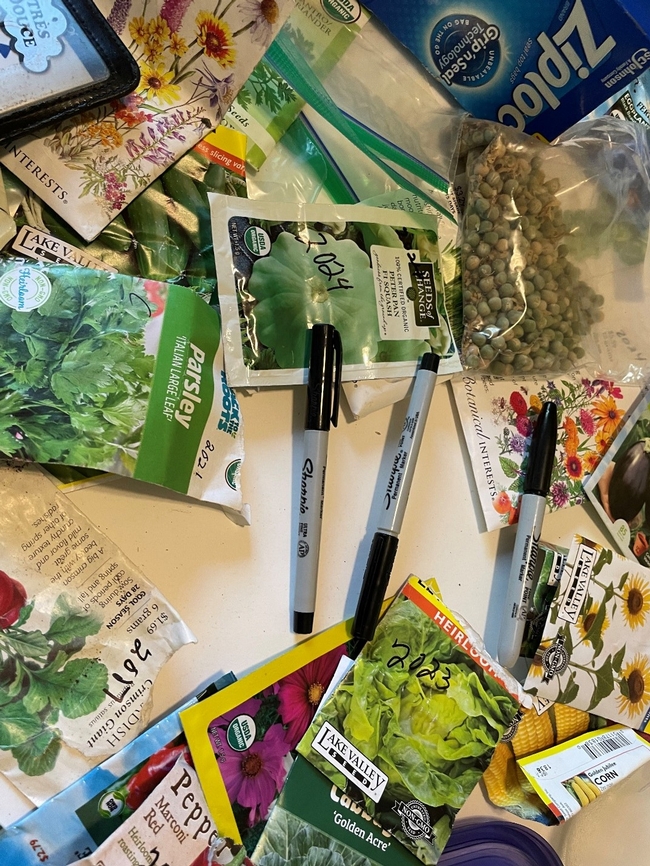Buy Too Many Seeds?
I have been finding packs of seeds everywhere: in my garage, on the back shelf of my porch, in my car side pockets, in my garden work basket, and scattered throughout the house. I hate to throw them away, maybe I can plant them next season. How do I store them?
It looks like Snugs has found more seeds to save.
I ran into a couple of articles on keeping seeds and how long to keep them. Seeds should be kept in a cool dark place and moisture-free. Any kind of moisture will encourage mildew and ruin the seeds. You can use silicon/silicate also called Silica Gel packages to absorb excess moisture. You can find them in medicine bottles or stuffed in leather purses or wallets where they are put to keep mildew from ruining the leather. DO NOT EAT. If you're not sure if the packets are still working you can dry them out in the sun on a low humidity day. You can also purchase Silica gel packetsonline.
Store open packs of seeds in plastic baggies and seal well. Mark the year the packs were made for: “Plant before December 2000” Place the baggies into a lidded container seal ir and place it the refrigerator. I didn't realize I had so many seeds, I have to buy more storage containers. You can organize your seeds anyway you like. By date, by type, or my method not at all.
- Save your unused seeds date them with the “use by date” or the date you harvested them.
- Check how long you can save them.
- Use plastic bags for open packages put the bags in a storage container,
- Store in a cool dry place. A refrigerator is an excellent place to store them.
If you're saving seeds from heirloom plants, make sure they are completely dried out before you put them in storage. Squeeze the seeds between your fingers, if they're soft they are not quite dried out. There is an excellent UC Master Gardener Article “Saving Seeds of Popular Vegetables” it covers drying and storage of seeds collected from the garden.
From the University of South Dakota https://extenstion.sdstste.edu/leftover-garden-seeds comes this handy guide to shelf life of your seeds if stored properly:
2 YEARS; Corn, Lettuce, Okra, Onion, Parsley, Parsnip, & Pepper
3 YEARS: Bean, Broccoli, Carrots, Celery, Kohlrabi, Peas, & Spinach
4 YEARS: Beet, Cabbage, Fennel, Kale, Mustard, Pumpkin, Rutabaga, Squash, Swiss Chard, Tomato, Turnip, & Watermelon.
5 YEARS: Brussels Sprouts, Collards, Cucumber, Endive, Muskmelon & Radish
Always bring your seeds up to room temperature before planting.
LIVE LONG AND PROSPER
More reading: -garden-
UC Master Gardeners, Santa Clara, “Saving Seeds of Poplar Vegetables”
South Dakota State University Extension, https://extenstion.sdstate.edu/leftover-seeds. “How to Store Leftover Garden Seeds.”

seeds in fridge




